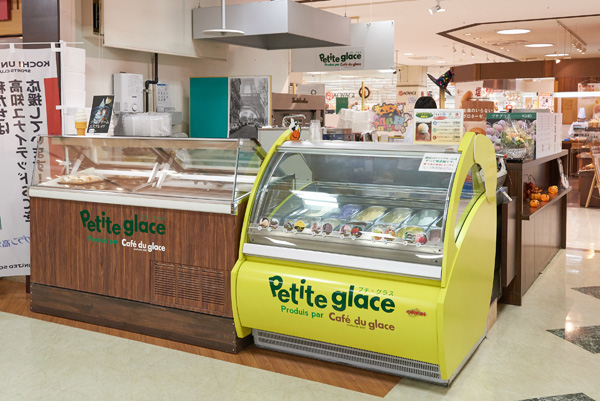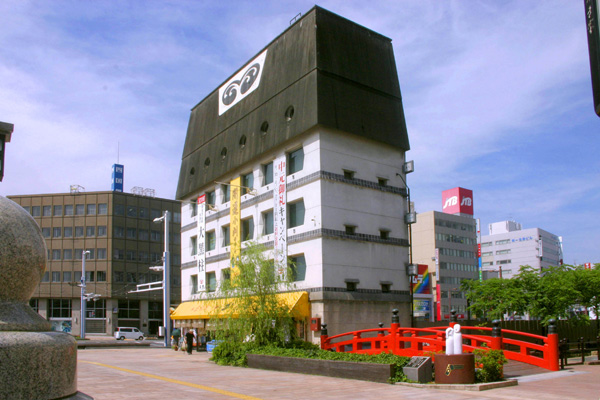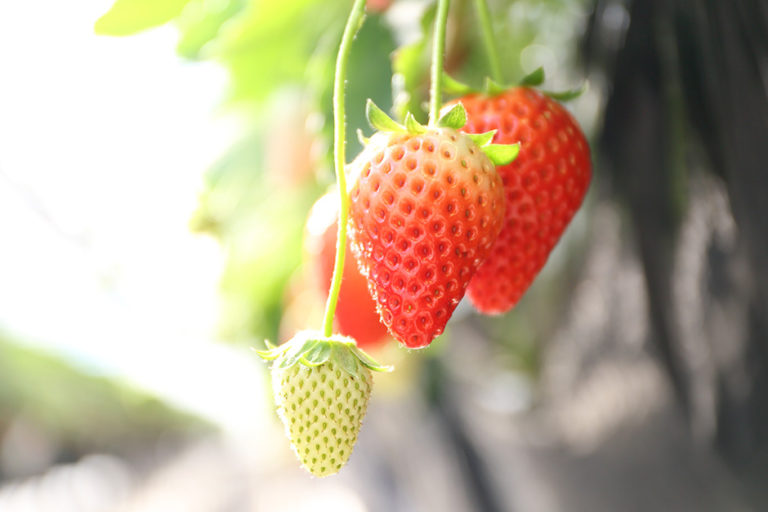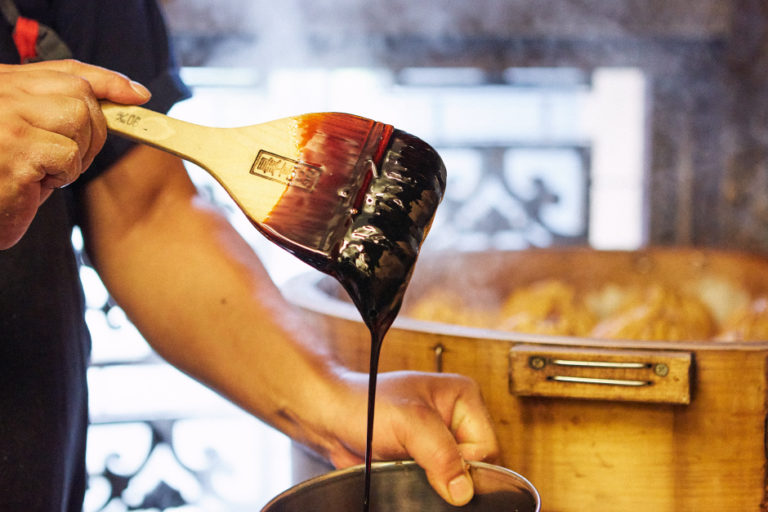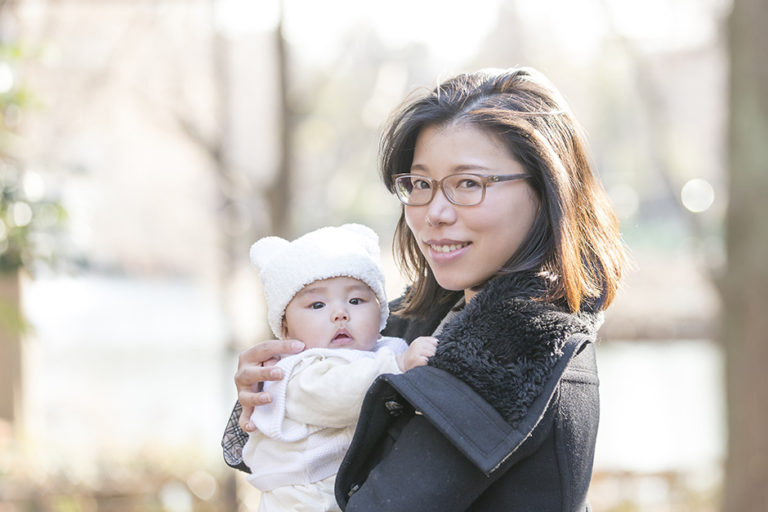Passion of the Region Culminates in Large Pears
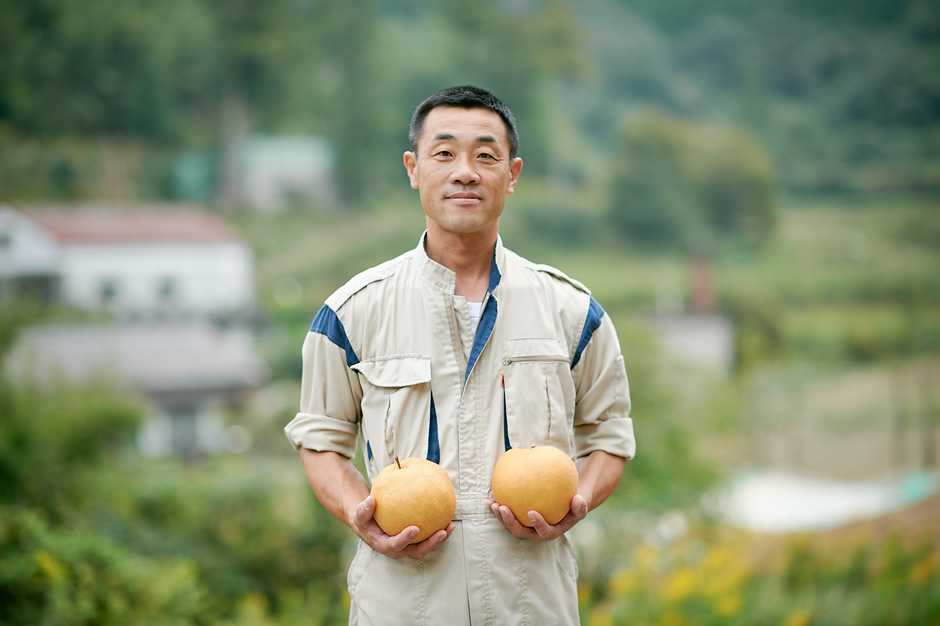
Though they are grown across Japan, Harigi, Kochi City, Kochi, is a region devoted entirely to Niitakanashi pear farming. We visited Harigi during the peak season for pears, which lasts from October to November.
The land of pears with alternating warm and cool breezes
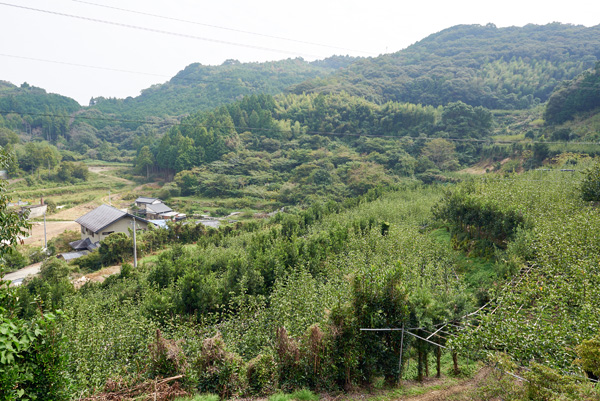
Harigi, Kochi City, Kochi. Located in the deepest pocket of Tosa Bay facing the Pacific Ocean, Harigi is a region where, before anywhere else in Japan, Niitakanashi pear farming started in 1930. You can see orchard-run booths selling pear everywhere, with yellow banner flags. Right now, Harigi Union has 32 producers growing Niitakanashi pears.
It was Harigi’s blessed natural environment that made Niitakanashi pear orchards so popular in Harigi. Apparently, on top of quality soil, the warm daytime breeze from the Pacific Ocean and the cool breeze at night from Riv-er Niyodo, a class A river that runs through the west of the district, create just the right temperature fluctuations, which help boost the sweetness of the pear.
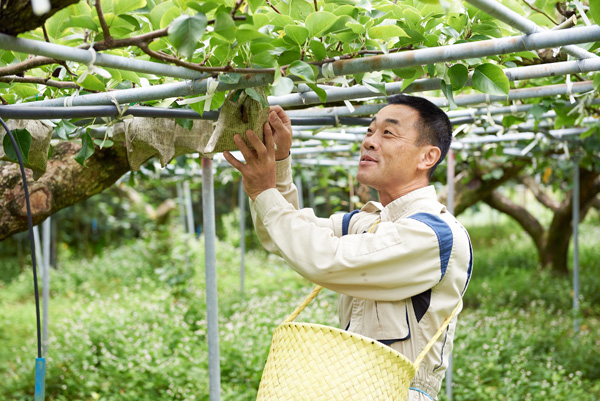
When we visited the orchard of pear producer Manabu Katto, he was right in the middle of pear harvest.
In his 30-acre premises, Katto had planted 60 pear trees, bearing about 9,000 Niitakanashi pear each year. To protect the pear which is vulnerable to the heat from direct sun exposure, the pear is double-bagged, and he removes each bag by hand and touches them to check the texture, be-fore harvesting them carefully.
“It is difficult to grow tasty Niitakanashi pears. You know, temperatures keep rising lately because of global warming. Too much heat is not okay, and being too cool is not okay either. They are such sensitive fruits so it is very difficult to see when they are just ripe.”
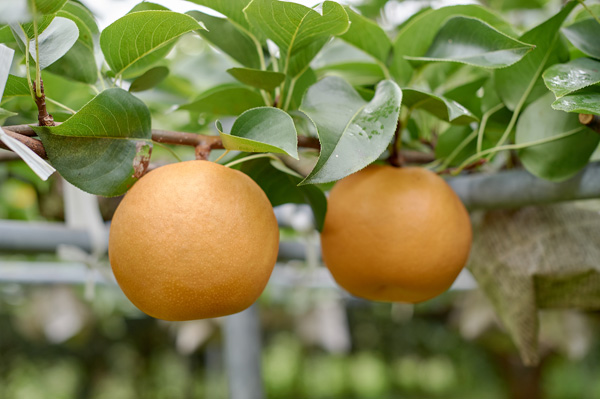
Starting in the rainy season, he needs to water the pears every 15 minutes. But too much water will rot the pears, so when it rains, he has to carefully adjust how much water to give.。
Katto then measures the weight and sweetness level of each pear after pick-ing them, and separates them into two groups; one for selling fresh, for gifts and other purposes, and the other for processing. Katto said large ones weigh more than 1.3 kg, but the best ones are those that weigh around 800g, with sweetness level of 12 to 14.
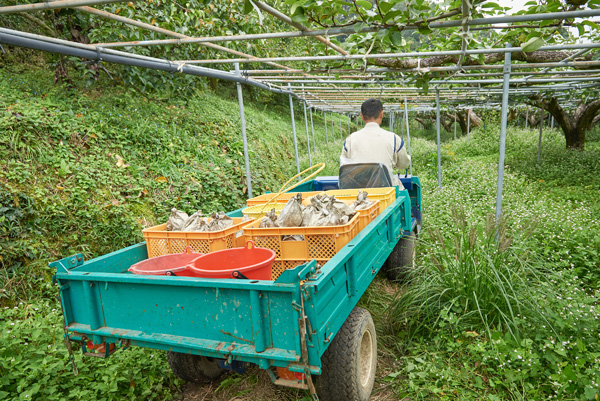
He gave us a slice. The size was nothing like that of an ordinary pear. We could only push it into our mouths when we opened our jaws as wide as we could. The familiar, light and crispy pear texture was unequivocally there, and an intense sweetness and aroma hit us and spread through our mouth a little later. There was no better way of savoring the pear.
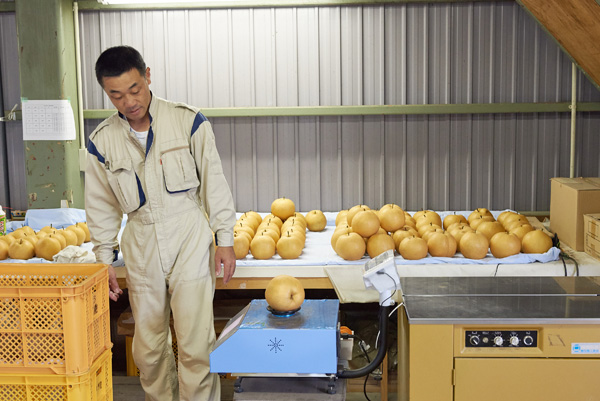
“You cannot nibble on pear (laughs). The fresh pear tastes best when you have a big bite.”
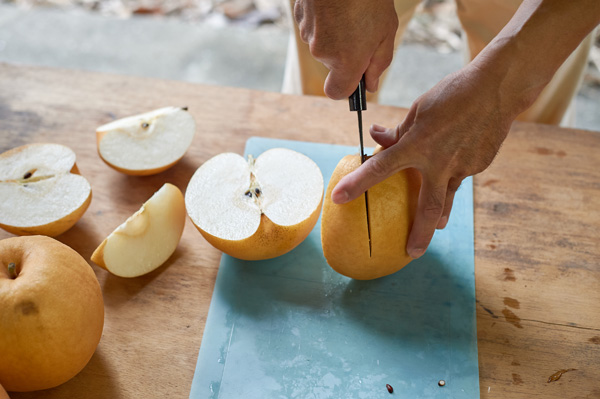
His non-processing pears never emerge on the market. They get sold out by regular customers, directly placing orders with Katto.
Embracing love and gratitude for the pear
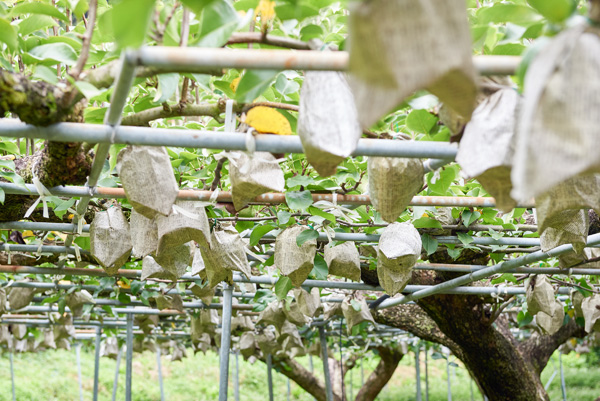
Katto, 52, started growing the pear 12 years ago. The passing of his parents, who were also pear producers, became his turning point. He left his job as a car mechanic and took over the orchard. He taught himself, receiving advice from helpers. The effort that went into the job, and how difficult it was, was beyond his imagination.
“You deal with nature, so your experience and intuition are very important. On top of that, if you want tasty pears, you cannot slack off in any of the pro-cess that takes place throughout the year, in any detail. Being an onlooker and actually doing it myself were completely different stories.”
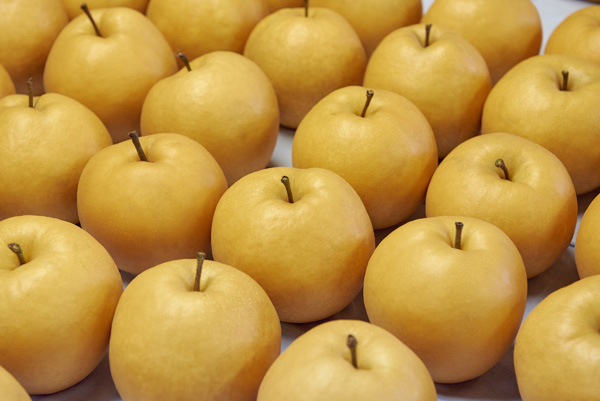
Pear farming starts from preparing the soil in winter. The early stage in-volves pruning, and pollinating when the pear starts blossoming in spring. In May, when the pear starts to grow, he has to cull them, and come June, needs to bag them toward harvest in autumn. After that, he takes care of the pear, constantly battling the day’s temperatures and humidity. His pears are in-tensely sweet because he lets them fully mature on the trees before picking them.
If any part of the process goes wrong, the pears will not be right. And Katto does everything by hand, by himself. Pear trees bear fruit only once a year, so it is trial and error for Kato each year, sometimes double-bagging, sometimes triple-bagging, constantly searching for the best method possible.
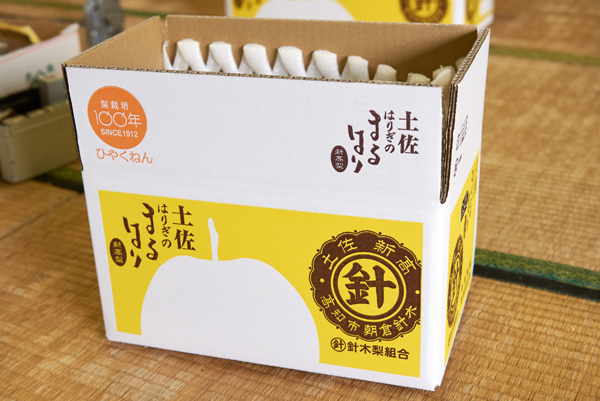
“Growing tasty Niitakanashi pears to my own standard is one way of giving back to my parents, and to the pear. The pear also raised me. I am planting new trees now, and sowing seeds for the next generation, so this orchard will yield Niitakanashi pears 50, 100 years later,” smiled Katto.
Distinct pear flavor stays intact in processed products
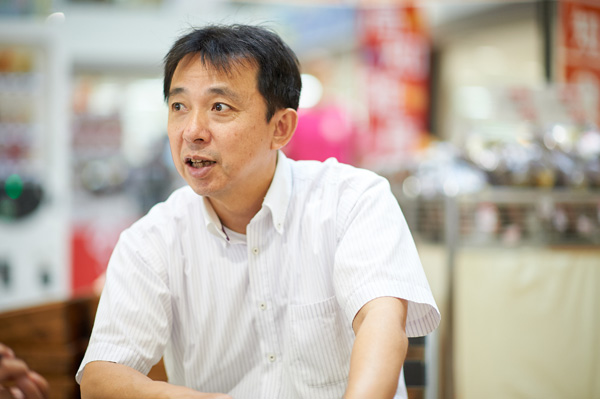
Raised with attention with the producers in a blessed environment, Kochi’s Niitakanashi pears are intensely tasty, so much so that they have an out-standing presence even when they are used as part of processed products. Petit Glace, a special additive-free ice cream store in Kochi City, sells ice cream with Niitakanashi pears. Usually pears have too much moisture and are not sweet enough to be used in ice cream, but Niitakanashi pears are an exception, says owner Yasufumi Maeda.
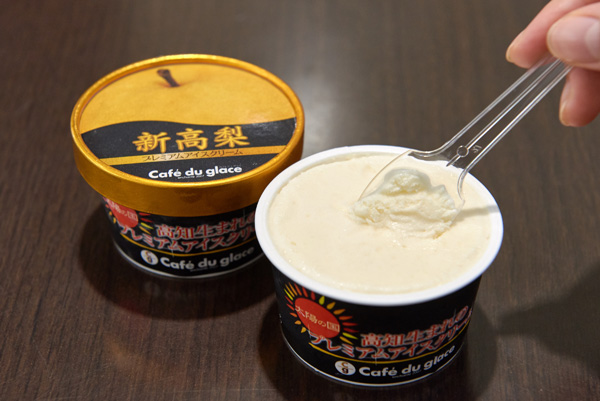
“Kochi’s Niitakanashi pears are just in another class in terms of sweetness and flavor. Other varieties will not work for ice cream, because their flavor gets watered down. The Niitakanashi flavor is something everyone in this area has grown up with. It is an essential flavor in our store.”
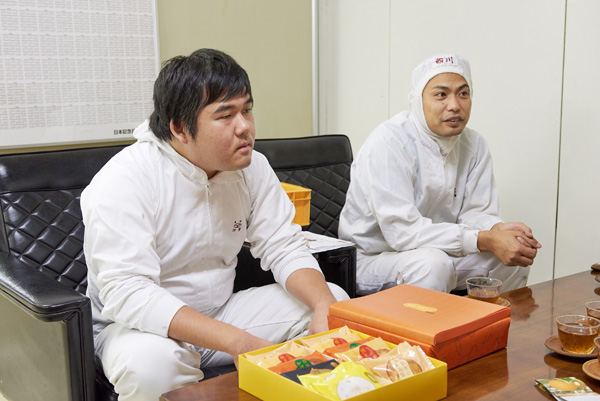
An esteemed confectionery maker Hamako in Kochi City also sells oven-baked Niitakanashi pear pie. It took them a whole year to develop the prod-uct. When they heated pears the moisture was lost, so it took a lot of effort be-fore they finally managed to retain the original texture of the pear.
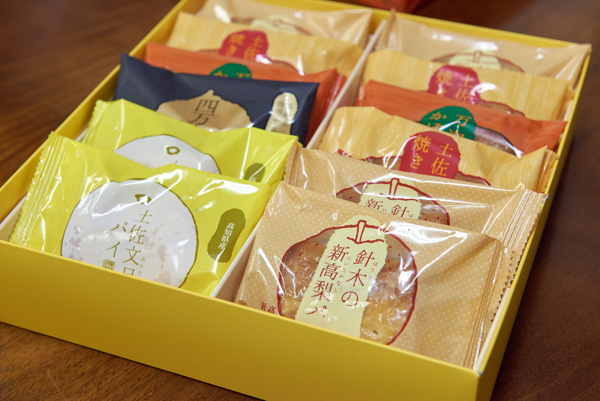
“Niitakanashi pears are very sweet, so their flavor stays intact even if you bake them in a pie. The ones from Harigi are in another class. We are hoping our customers discover the greatness of our local Niitakanashi pears, in the form of our confectionery,” says Yoichi Shimasaki and Toshikazu Nishigawa of the company’s Production Division.
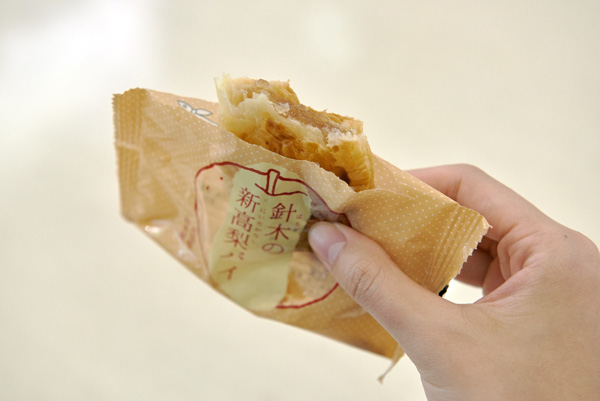
Whether they are pear producers or operators using pears in their products, everyone talks about Kochi’s Niitakanashi pears so proudly.
Enjoy the pear this peak season, justifiably called the king of pears for its monumental pres-ence.
Niitakanashi pears from Harigi, Kochi
Source:Manabu Katto, pear producer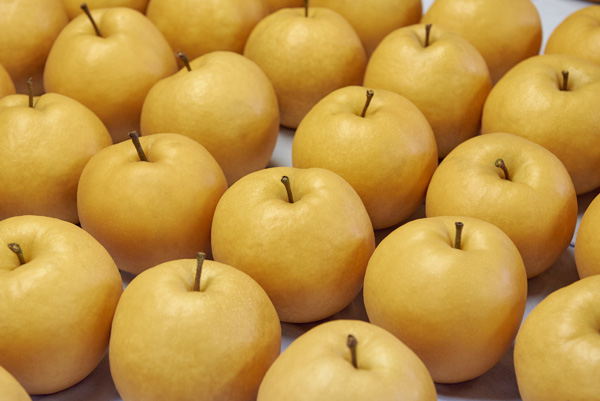
Peak Season
October to November. They do not last long so eat them as soon as they are picked.
Tips
Straight shaft and a good, round shape.
Pears weighing around 800 g have the optimum balanced flavor.
How to enjoy them
It is best to have a generous bite of a fresh pear. You can also leave a bit of skin on and eat it, because there is a lot of polyphenol in the skin.

